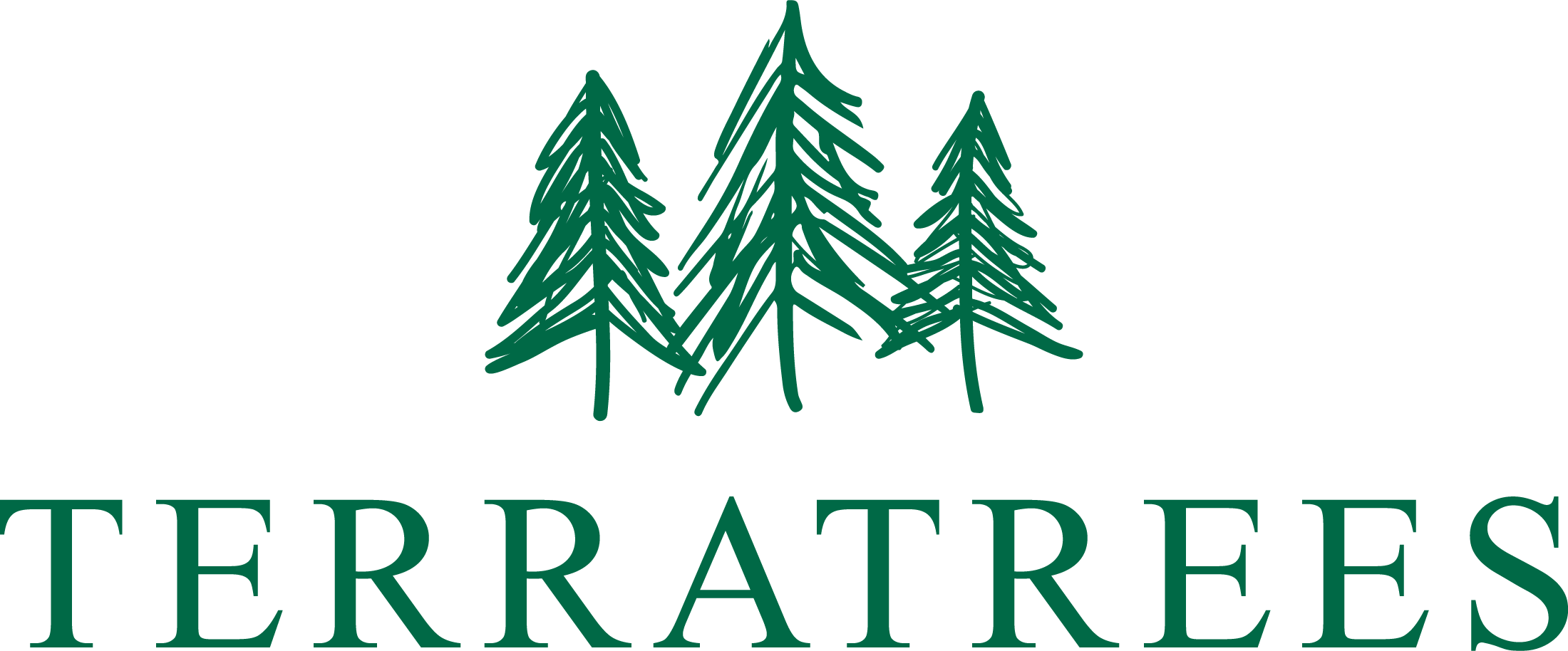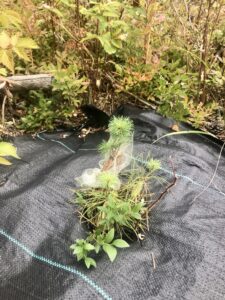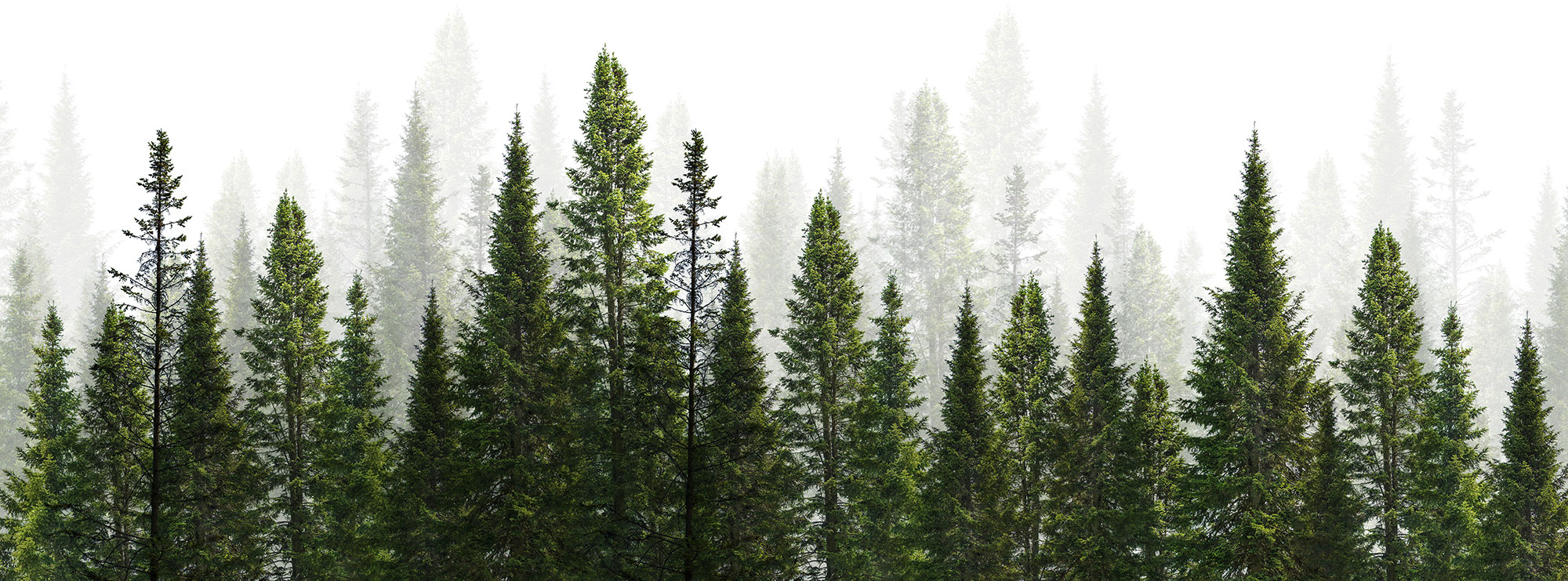Forest Biodiversity
Hello from the Dietz Family! This spring’s planting was part of our multi-year project to increase forest biodiversity across four of our seven properties. Why? Because when we purchased them most of the acreage was largely monocultures of red pine.
The seedlings went into the ground the week of May 22-26. It was our latest planting date ever due to a long winter with heavy snow and frozen ground conditions well into spring. This also led to longer wait times to receive the seedlings from the tree nurseries.
Our forest diversity plans are constructed in partnership with our foresters based on a couple of different factors. One of the deciding elements is wherever we’ve already selectively harvested trees in the monoculture in order to create a micro-forest diversity site. The next year we come back and replant multi-species in that open footprint.
Diversity sites are also selected based on previous reforestation failures. What this means is that some of our lands were not successfully reforested many years before we even purchased them. So we’ve been mindful about bringing attention and diversity to these sensitive micro-sites.
Efforts to Diversify a Forest Monoculture
Red pine plantations have many benefits including sequestering a tremendous amount of carbon and keeping a forest a forest as opposed to being cut down. But as the years go on, we aim to do selective, conservative harvests in order to come back in the spring to plant a variety of different tree species. This increases forest biodiversity because, ultimately, monocultures can have detrimental effects on the environment and the planet for a couple of important reasons:
- Increased pest and disease vulnerability: Without natural predators or other plants that can act as a barrier, these issues can quickly spread.
- Loss of genetic diversity in plant, animal, and insect species: The more varied biological species are present in a given area, the stronger and richer the ecosystem.
So long story short, a diverse forest is a much healthier ecosystem.
The tree species that we put into the ground this spring included white pine, jack pine, red oak, white spruce, and sugar maple. We’ve been doing diversity plantings for several years now, but this was the first time we’ve introduced hardwoods into the mix.
Planting Results
Overall, our seedlings had a difficult season because of the drought.
We used tree nets on all of our white and jack pine, so this aspect proved successful against deer browse. However, the success rate of the white and jack pine plantings was only 10%. Our working theory of this loss is because of the weed mats. Though the mats can be massively successful, this is more likely true in seasons of regular rain, or times of heavy rainfall when competing vegetation could choke out the seedlings. However, in drought seasons like this year, the weed mats may have worked against us by overheating the soil, which grew progressively more parched as the summer wore on with very little rain.
The white spruce suffered the same dismal success rate as the jack and white pine. They had the weed mats, but not the tree nets because the deer don’t browse on spruce.
The good news is our red oak seedlings hung in there very well with a 95% success rate. They were protected by 5’ tall tree tube shelters which are transparent to light. These tree tubes guard the seedlings from deer browsing, create a more humid micro-climate so the tree can retain what moisture is available, and help it compete with surrounding vegetation. Here are a few pictures from our planting sites (click images to view larger).
-
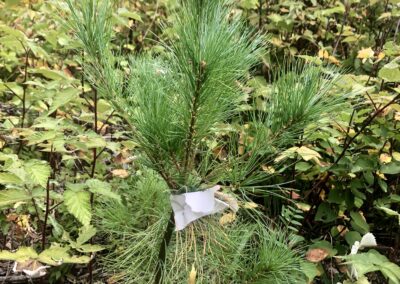
Planted in 2021, this white pine is doing very well. The white, stapled paper is a remnant from the manual bud-capping we do to protect the apex bud. The deer love to eat those, but that causes a lot of problems for the tree and can even lead to tree failure.
-
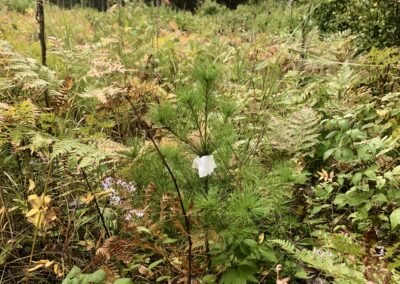
Two years ago, we made this clearing in another red pine monoculture to make way for more diversity. In the foreground is a healthy white pine planted spring of 2021 as well. You can see where the apex bud has grown beyond the stapled white paper that protected it from deer browse the previous season. Success!
-
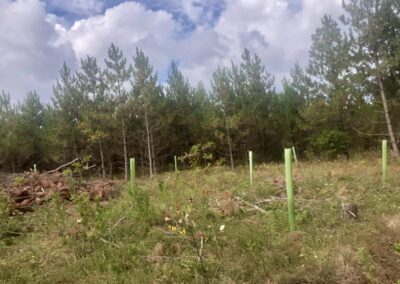
The tree tubes greatly helped the red oak seedlings. Previously, this site was a red pine monoculture. In the spring of 2024, we're going to plant an additional four native species besides the red oak.
-
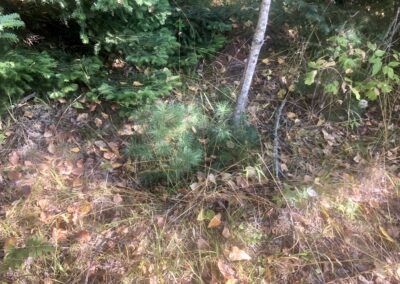
Natural white pine regeneration! This is amazing! Now we just need to protect it from the deer.
-
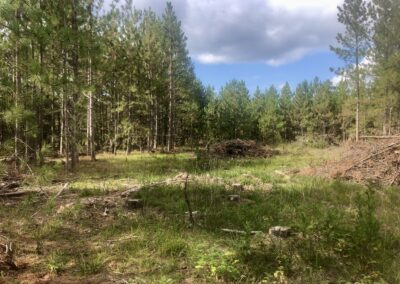
Here's a small clearing in a red pine monoculture. We are preparing the site to plant five native tree species in the spring of 2024.
-

Successful jack pine seedling on a weed mat. It was protected by a tree net (you can still see it at the base).
-
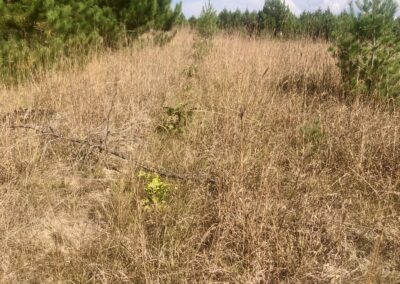
Happily, some oak seedlings survived without the tree tubes.
Hope + the TerraTrees Guarantee
Looking ahead, spring 2024 will be a very big planting year because in addition to the normal planting, we’ll be replacing the trees lost in 2023. This is our guarantee – one we’re happy to stand behind.
Coming soon we’ll provide an update on our 2024 planting plans – both the forest biodiversity planting as well as the reforestation of a new property we’ve named “Basswood,” which we purchased on July 28th. (More on that coming soon!)
Thank you for your support and have an amazing fall! 🌱
